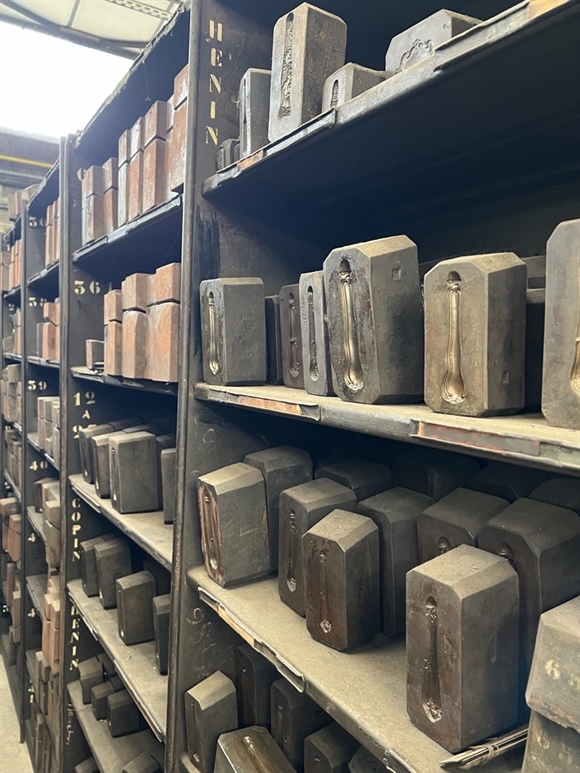Founded in Paris in 1690, Odiot SA is one of France’s oldest and most prestigious silversmith houses. It is renowned for its exceptional craftsmanship, as Jean-Baptiste-Claude Odiot, served as the official silversmith to Emperor Napoleon Bonaparte. Odiot’s creations are said to have graced the tables of European royalty. This age-old reputation is clearly its prime asset, closely linked to its craftmanship. Since its inception, Odiot has continued to chisel high-quality silverware and decorative pieces, maintaining its legacy of excellence.

Odiot Holding, initially listed under the name “Well,” made its debut on the Euronext Access market on February 19, 2010, through a direct listing process. In July 2024, a change in its reference shareholder saw the company rebranded from Well to Odiot SA. This rebranding marked a renewed focus on its core asset, the historic French silversmith brand Odiot. The Well/Odiot SA portfolio of assets has been narrowed down to Odiot SAS, the operating company, in which it owns 52%.
Odiot SA is all about Luxury Silverware and Decorative Arts. These are niche markets although they are worth … €10bn. The global silverware market, encompassing flatware and decorative items, is experiencing steady growth. According to Future Market Insights, the flatware market was valued at approximately USD 11.5 billion in 2025 and is projected to reach USD 18.1 billion by 2035, reflecting a compound annual growth rate (CAGR) of 4.5%. There is no break-out detail for high-end silverware.
Ultra-luxury seeks growth
Odiot’s clientele includes private collectors, luxury hotels/restaurants (the BtoB business on which it relies) and institutions seeking bespoke silver pieces. This market is driven by craftsmanship and brand heritage rather than by innovation. Purchasing decisions are influenced by exclusivity, historical significance and artisanal quality.
Entry barriers are down to high craftsmanship standards and brand heritage: Odiot’s centuries-old legacy and recognition as a Living Heritage Company (Entreprise du Patrimoine Vivant) provide it with a competitive edge. Clearly Odiot owns a unique library of forms and designs (3,500 in all, 14 current collections).

Competitors include Christofle – a well-known French silversmith offering both traditional and contemporary designs (2024 sales: €70m) – and Puiforcat (€7.7m sales). Christofle is always mentioned but clearly in a lower league so no real competition in the luxury segment. Puiforcat is owned by Hermès. It relies on Odiot for part of its manufacturing with Puiforcat accounting for 30% of Odiot’s revenues. Puiforcat has its own designs (more contemporary) and subcontracts to Odiot. It is not in competition product wise. Interestingly Hermès /Puiforcat appear keen to extend their foray into luxury tableware.
Outside of France, Robbe & Berking, a German heritage silversmith with strong international recognition, and Buccellati (part of Richemont, with €80m in revenues) are the only serious contenders. Other players remain niche and very limited in scale, such as British Silverware Ltd., which specializes in bespoke silverware manufacturing, and Calegaro in Italy.
Odiot’s market tends to be less exposed to traditional macroeconomic cycles thanks to its focus on high-net-worth individuals and institutions. However, the company is vulnerable to geopolitical developments, such as the Russia-Ukraine conflict, new US tariffs, and broader global uncertainties. These factors can disrupt discretionary spending patterns and project timelines, particularly given Odiot’s strong reliance on interior designers to reach its end clients, whose activity often slows in periods of heightened geopolitical risk.
The growth drivers are a reliance on digital platforms to increase brand visibility and sales. An ‘access to the brand’ strategy has been deployed via the production of small silverware animals in the c.€500-€800 price band. The current management is also keen to extend the range of silversmith products beyond ultra high end cutlery and expand toward decorative pieces.
Recent growth plans include expanding the business with Puiforcat and recruiting sales agents for the USA, Middle-East and the UK. Over the mid-term the plan is to expand into emerging markets showing an appetite for luxury heritage goods. Odiot plans to strengthen its presence in international markets, particularly in Asia, through strategic partnerships and targeted marketing initiatives.
Rebuilding a’ manufacture’
The key issue is not a lack of demand but how to satisfy it. Years of management decay had led to dramatically poor productivity. Things have been straightened out with no loss of artistic expertise meaning that the new management now makes a case for a four-fold increase in revenues over the next 4-5 years.